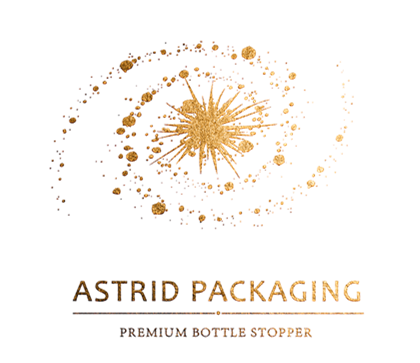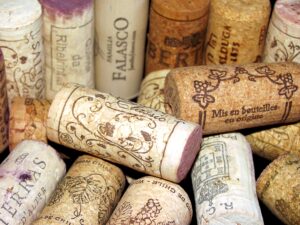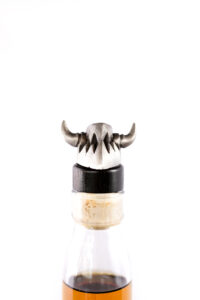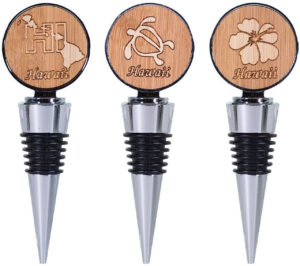
The corks we often see are wood corks and screw corks. In fact, the categories of wine bottle corks are complex. There are different classifications for different materials and lengths.
Next, let’s take a quick look at the eight most common wine stopper categories and talk about what kind of wine stopper is the best.
Natural cork
Here is a popular science. Cork is often called “oak cork”, but it is actually made of the bark of Quercus variabilis. Although Quercus variabilis and oak belong to Fagaceae, they are two different tree species.
The bark of oak is hard and only suitable for making furniture and oak barrels; The bark of Quercus variabilis is thick and elastic.
It is considered to be the most ideal wine stopper. While sealing the bottle mouth, it also has micropores to help wine “micro oxidation” and aging.
Natural cork is made of intact bark, with smooth and flat surface, natural small holes, and uniform and dense wood grain in section.
Patch cork
Patch cork is also known as composite plug. It is made of crushed wood particles, and a natural cork round piece and a 1 + 1 wooden plug are pasted on one or both ends.
The end of the cork contacting the liquor is made of natural material, and the overall cost is lower than that of the natural cork. It is suitable for wines that do not need aging.
Polymeric cork
Polymerized cork is also called broken cork. It is made of cork particles and binder, which has low cost and is suitable for low-cost wine.
However, with the development of Technology (DIAM Technology), the performance of polymeric cork is greatly improved.
Mumm champagne in the champagne producing area of France has been using diam polymeric cork since 2005. This wine stopper will have the words “diam” on it, which is easy to identify.
Polymer synthetic plug
Commonly known as “rubber / plastic plug”. The shape and function imitate the natural cork, and the plug core has uniform small pores to help the wine “breathe”.
The synthetic plug has low cost and can be manufactured into various colors and shapes.
Filling plug
At first glance, it looks like a natural cork, but if you scratch the surface, you will find something similar to paint.
It is made by applying cork powder and adhesive evenly on the surface of the cork and filling the holes of the cork.
Glass plug
This kind of bottle stopper is very popular in parts of Europe, such as Germany and Austria. The glass stopper is very beautiful, recyclable and can effectively prevent wine oxidation.
If you haven’t finished drinking after opening the bottle, just cover the glass stopper directly, which is very convenient.
The disadvantage is that it adds a certain weight to the wine and the cost is high.
Screw cap
Screw cap is often mistaken as a symbol of cheap wine, which may have some reference significance in old world wine.
But it is an absolute misunderstanding for new world wine. For example, New Zealand is the country with the most expensive average wine export in the world except Canada. 90% of its wine uses screw caps.
Which is better, screw cap or oak stopper, has always been a big controversy in the wine circle.
Zoke cork
At present, this new bottle seal is very rare in China’s market, but it has a considerable audience in Australia.
As long as the protective seal is torn open, the wine stopper will pop automatically.
It is suitable for both static wine and sparkling wine, and there will be no problem of cork pollution.
However, this wine stopper needs to be used with special wine bottles, so the cost is high.





